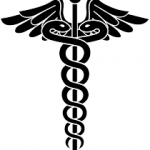In today’s rapidly evolving healthcare landscape, patient loyalty stands as a cornerstone for success. Hospitals and healthcare providers strive not only to deliver exceptional care but also to cultivate enduring relationships with patients. By fostering patient loyalty through a connected care journey, healthcare facilities can not only improve patient outcomes but also enhance profitability. This article explores strategies to enhance patient loyalty and profitability through a seamless care experience.
Understanding the Significance of Patient Loyalty
Patient loyalty is more than just a measure of satisfaction; it encompasses trust, engagement, and a willingness to continue seeking care from a particular healthcare provider. In an era where patient choice and empowerment are on the rise, building and maintaining patient loyalty is paramount. Hospitals recognize that loyal patients not only contribute to recurring revenue but also serve as advocates, spreading positive word-of-mouth and attracting new patients.
The Role of Patient Loyalty in Healthcare Profitability
Hospital profitability is intricately linked to patient loyalty. Loyal patients are more likely to utilize a hospital’s services consistently, leading to increased revenue generation. Moreover, loyal patients tend to require fewer resources for acquisition and retention compared to new patients. By focusing on patient loyalty, hospitals can achieve sustainable growth and financial success.
Enhancing Patient Loyalty during the Patient Discharge Processing Stage of Revenue Management
The patient discharge process represents a critical juncture for fostering patient loyalty. Hospitals can leverage this stage to provide personalized support and guidance, ensuring a smooth transition from hospital to home. By implementing proactive follow-up measures, hospitals can address any concerns or issues that may arise post-discharge, thereby strengthening the patient-provider relationship.
Patient Loyalty in Healthcare: The Importance of Patient Stations
Patient stations serve as centralized hubs for information, communication, and engagement within healthcare facilities. By leveraging patient stations, hospitals can streamline communication, deliver relevant educational content, and gather feedback from patients. These interactive touchpoints contribute to a more personalized and connected care experience, ultimately fostering patient loyalty.
Love is Patient: Cultivating Empathy and Compassion in Healthcare
At the heart of patient loyalty lies empathy and compassion. Healthcare providers who demonstrate genuine care and concern for their patients are more likely to earn their trust and loyalty. By practicing empathy in every interaction, healthcare professionals can create meaningful connections with patients, leading to long-lasting relationships built on mutual respect and understanding.
Strategies for Enhancing Patient Loyalty and Profitability
Personalized Care Plans: Tailoring treatment plans and care experiences to meet individual patient needs and preferences.
Proactive Communication: Keeping patients informed and engaged throughout their care journey, from admission to post-discharge follow-up.
Continuous Feedback Loop: Soliciting feedback from patients and using it to improve service delivery and patient satisfaction.
Community Engagement: Building strong ties with the local community and fostering a sense of belonging among patients.
Technology Integration: Leveraging technology to enhance communication, streamline processes, and deliver more personalized care experiences.
Implementing a Connected Care Journey
The implementation of a connected care journey requires a concerted effort from healthcare providers at every level. Here are some practical steps to enhance patient loyalty and profitability through a connected care approach:
Integrated Electronic Health Records (EHR): Ensure seamless access to patient information across departments and healthcare settings by adopting interoperable EHR systems. This enables healthcare providers to deliver coordinated care and personalized interventions based on the patient’s medical history and preferences.
Telehealth and Remote Monitoring: Embrace telehealth solutions and remote monitoring technologies to extend care beyond the confines of the hospital. By offering virtual consultations and remote monitoring of vital signs, hospitals can provide continuous support to patients, especially those with chronic conditions, enhancing their overall experience and loyalty.
Patient Engagement Platforms: Invest in patient engagement platforms that empower patients to take an active role in their care. These platforms may include features such as appointment scheduling, medication reminders, health education resources, and secure messaging with healthcare providers. By promoting patient engagement and self-management, hospitals can foster a sense of ownership and commitment among patients.
Care Coordination Teams: Establish interdisciplinary care coordination teams comprising physicians, nurses, social workers, care coordinators, and other healthcare professionals. These teams collaborate closely to ensure seamless transitions of care, from admission to discharge and beyond. By facilitating communication and collaboration among team members, hospitals can minimize gaps in care and enhance patient satisfaction.
Patient Outreach and Education: Develop targeted outreach and education programs to address the unique needs and preferences of different patient populations. This may involve providing culturally sensitive educational materials, hosting health seminars and workshops, and offering support groups for patients with specific conditions. By empowering patients with knowledge and resources, hospitals can build trust and loyalty among diverse patient groups.
Measuring Success and Continuously Improving
To gauge the effectiveness of initiatives aimed at enhancing patient loyalty and profitability, hospitals must establish key performance indicators (KPIs) and metrics for evaluation. These may include patient satisfaction scores, patient retention rates, referral rates, and financial indicators such as net patient revenue and operating margin.
Additionally, hospitals should leverage data analytics and feedback mechanisms to gain insights into patient preferences, trends, and areas for improvement. By analyzing patient feedback, complaints, and satisfaction surveys, hospitals can identify opportunities to enhance the patient experience and address any gaps in care delivery.
Continuous improvement is essential in the pursuit of patient loyalty and profitability. Hospitals should regularly review and refine their strategies based on feedback from patients and staff, emerging trends in healthcare delivery, and changes in regulatory requirements. By remaining agile and responsive to evolving patient needs, hospitals can maintain a competitive edge and sustain long-term success.
Conclusion
In conclusion, enhancing patient loyalty and profitability through a connected care journey requires a multifaceted approach that prioritizes patient-centered care, seamless communication, and continuous improvement. By embracing technology, fostering empathy and compassion, and empowering patients to actively participate in their care, hospitals can cultivate lasting relationships with patients and drive financial success. Investing in a connected care journey not only benefits patients but also strengthens the overall healthcare ecosystem, contributing to improved outcomes and experiences for all stakeholders involved.




